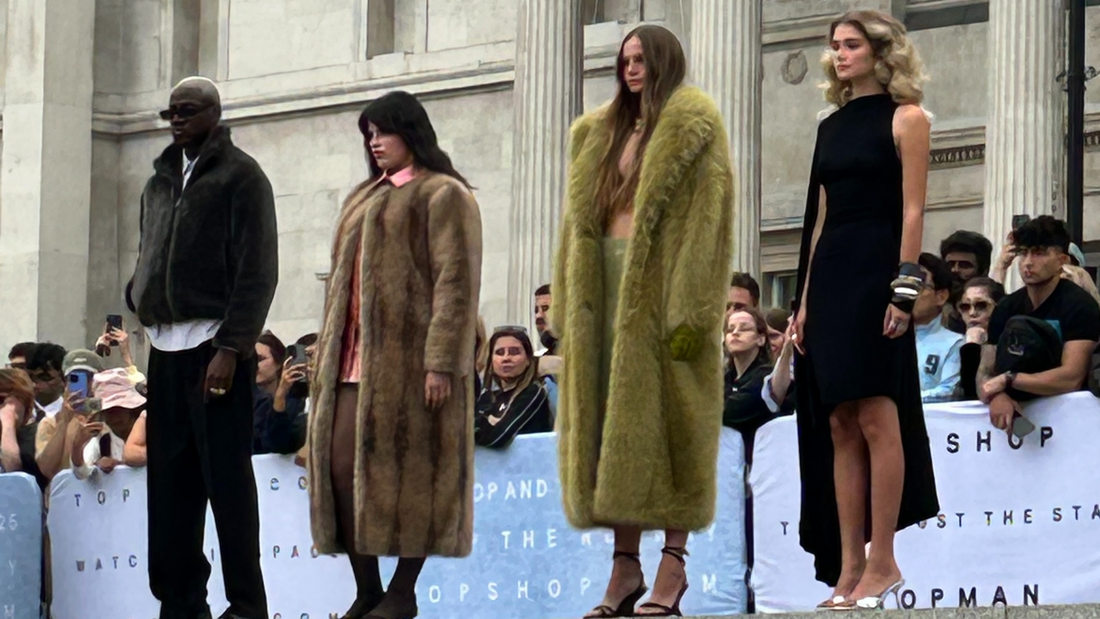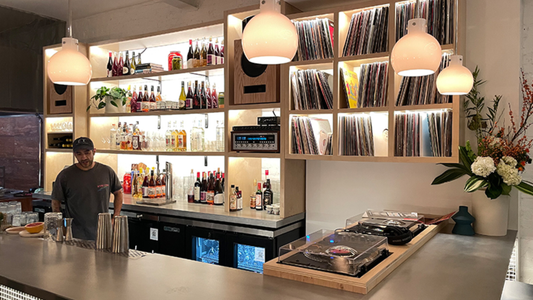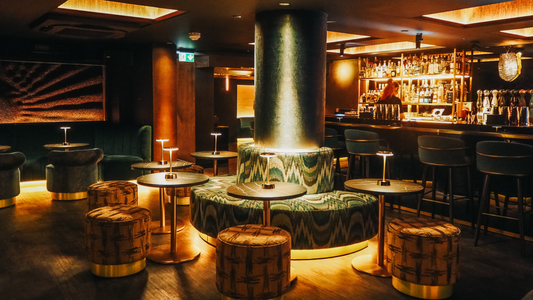
Topshop’s London return & a night of style in sound
By Amelia Fairfax
Trafalgar Square was electric, the fountains backlit by fashion’s return to London’s centre stage. Against the stone steps and the gaze of the National Gallery, Topshop and Topman unfurled their first runway in seven years, staking their claim once again in the capital. I stood there in an Adidas Love tee and vintage Gazelles, feeling the weight of it — a brand that once defined my twenties reborn in the heart of the city. Cara Delevingne strode the catwalk, oversized tailoring swung sharp lines across the crowd, and pea-green faux fur flashed with a confidence only London can carry. Then Norman Cook — Fatboy Slim to us all — lifted the tempo, turning the square into a party. The sound spilled out like a secret we’d all been waiting for.
It struck me harder than I expected. I’d lived that world from the inside, starting at Topshop HQ, then carrying its voice across the US, before coming home to Oxford Street, where escalators buzzed day and night. Back then it felt like London’s style was on fast-forward, and Topshop was its soundtrack. To see the brand return here wasn’t just fashion nostalgia — it was a reminder of how clothes can re-ignite a city’s confidence.
After the lights faded, I moved east to chase the rhythm elsewhere. Café 1001 on Brick Lane was already alive, the DJ booth glowing in the half-light. SlothBoogie were on the decks, coaxing disco and house through a crowd that looked less runway, more lived-in. Sleeves rolled back, denim faded and scuffed, trainers catching the floor in time with the beat. It was the kind of style you can’t choreograph — the one that grows out of the street, authentic, restless, perfectly London.
Later still I found myself at Spiritland in King’s Cross, a place that always feels like stepping into a secret. Their sound system is obsessive in the best way, every vinyl crackle given its own stage. People leaned into the music, not over it, their style understated: selvedge denim, soft knitwear, glasses that caught the low light. Here presence mattered more than performance. If Trafalgar was spectacle, and Brick Lane was energy, Spiritland was intimacy — three parts of London’s fashion-sound dialogue in a single night.
What stayed with me was the reminder that fashion and music are never separate threads. Trafalgar Square became catwalk then dancefloor. Café 1001 blurred trainers and basslines into the same movement. Spiritland made silence its own kind of style. My Adidas tee and vintage Gazelles felt right in each setting, not because they fit a code but because they carried me through them. That’s the truth of London: style here isn’t only what you put on, it’s how you live in it.
— Amelia xx
Amelia Fairfax writes about the fashion inside and outside listening spaces. For more stories from Tracks & Tales, subscribe here, or click here to read more.







